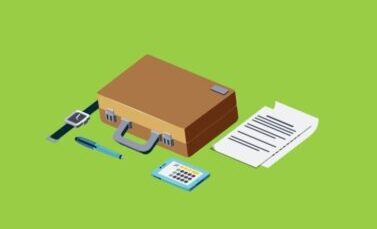
A Breakdown of all your Tax Liabilities, Payments & Deadlines
A Breakdown of all your Tax Liabilities, Payments & Deadlines
Main Types of Taxes
Corporation Tax
Corporation tax is paid on the profits that a company or association makes within the accounting period. Once the profits for the business have been calculated and the accounts have been filed with HMRC, it is the responsibility of the business to ensure that its corporation tax is paid before its payment deadline.
PAYE (Pay as you earn)
PAYE is a scheme that involves income tax and National Insurance contributions being deducted from an individual’s salary before they receive it.
It is the responsibility of the employer to calculate and pay the liability owed in income tax and NI contributions by the employee, therefore resulting in no further action being required by the employee to calculate their tax and NI liabilities.
Value Added Tax
VAT is a consumer tax which is added to most products and services sold by VAT-registered businesses. A VAT-registered business is required to complete a VAT return to calculate its liability owed to HMRC for collecting VAT from consumers. Because the tax is solely for consumers, business-to-business transactions allow for the reclamation of VAT through the VAT return that is required to be filed with HMRC.
Self-Assessment Tax
An individual who is self-employed or a shareholder who receives dividends are both required to complete a tax return to calculate their earnings after expenses for the tax year, this is then filed with HMRC at which point it is the individual’s responsibility to pay the self-assessment tax that they owe.
Tax Payment & Deadlines
Corporation Tax
The deadline for paying corporation tax depends on the company’s taxable profits.
Taxable profits up to £1.5 Million:
You must pay your Corporation Tax 9 months and 1 day after the end of your accounting period.
Your accounting period is usually your financial year, but you may have 2 accounting periods in the year you set up your company. This is because a set of accounts can be prepared for a period longer than 12 months, but a tax return cannot which results in an extended period of accounts having two tax returns and therefore two deadlines each corresponding to the tax return period, I have given examples below:
| Incorporation date | First Accounting Period | Tax return period(s) | Deadlines for paying tax |
| 15th March 2022 | 15/03/22 – 31/03/23 | 15/03/22 – 14/03/23
15/03/23 – 31/03/23
|
15th December 2023
1st January 2024 |
| 1st April 2022 | 01/04/22 – 31/03/23 | 01/04/22 – 31/03/23 | 1st January 2024 |
If the company’s taxable profits exceed £1.5 million, then the company must pay corporation tax quarterly and pay their projected tax in advance.
The rules on paying corporation tax once the profits exceed 1.5 million can get very complex, I have therefore linked the HMRC webpage which covers this in more detail if you wish to understand this more:
Taxable Profits between £1.5 million & £20 million: https://www.gov.uk/guidance/corporation-tax-paying-in-instalments
Taxable Profits exceeding £20 million: https://www.gov.uk/guidance/pay-corporation-tax-if-youre-a-very-large-company
HMRC have made it simple to pay corporation tax and the following methods can be used depending on how much time you need to allow for the payment to go through:
Same day or next day Payments
-
- Approve a payment through your online bank account.
- Approve a payment through your online bank account.
- Online or telephone banking by Faster Payments or CHAPS
- Online by debit or corporate credit card
3 working days
- Direct Debit (if you’ve set up one for HMRC before).
- Online or telephone banking by Bacs.
- At your bank or building society.
5 working days
- Direct Debit (if you have not set up one for HMRC before).
You can manage paying your corporation tax using a government gateway account that has this service added, follow this link to pay online and see more information: https://www.gov.uk/pay-corporation-tax
PAYE
The PAYE bill an employer has depends on the number of employees and the tax bands that each employee falls under, along with the National insurance contributions required for each employee. Using Payroll software to calculate this bill, a full payment submission (FPS) is generated which is used to inform HMRC of the amount that is owed to them from the PAYE scheme.
The FPS must be sent to HMRC on or before the employees’ payday, regardless of when you pay (quarterly or monthly).
This report consists of the following:
- Employer information
- Employee information – only includes employees you’ve paid.
- Pay and deductions.
- National Insurance information
HMRC has more guidance on populating this form here:
https://www.gov.uk/guidance/what-payroll-information-to-report-to-hmrc
The deadline is for paying HMRC the PAYE bill you have accumulated are below:
- The 22nd of the next tax month if you pay monthly.
- The 22nd after the end of the quarter if you pay quarterly – for example, 22 July for the 6 April to 5 July quarter.
If you pay by cheque through the post, it must reach HMRC by the 19th of the month.
You’ll need to use your 13-character accounts office reference number as the payment reference and follow this link once you are ready to pay the PAYE bill:
https://www.tax.service.gov.uk/pay/sign-in?traceId=21010973
You can manage paying the PAYE bill using a government gateway account that has this service added, follow this link to pay online and see more information: https://www.gov.uk/pay-paye-tax
VAT
As previously mentioned, a VAT return needs to be prepared to calculate the VAT a business has charged and the VAT that has been paid to other businesses, the result is the amount that is paid to HMRC or reclaimed from HMRC (depending on the business’ activity within the period).
The period that a VAT return must be calculated for depends on the scheme they are on.
Annual Accounting Scheme: A 12-month period involving advance payments in VAT, however only one VAT return being prepared for the year. As advance payments are required throughout the year, the final payment will be the difference owed to HMRC or owed from HMRC if Vat has been overpaid. Each payment is either 10% of your estimated VAT bill (monthly payments) or 25% (quarterly payments). The amount is based on previous VAT returns (or estimated if you’re new to VAT).
Quarterly Scheme: A 3-month period return, this is the most common.
Monthly Scheme: Monthly return scheme, this is the shortest period a return can be prepared for.
Once the VAT return is prepared, it needs to be filed and paid by the deadline, I have created a table below which shows the different filing and therefore payment deadlines for each scheme.
| Scheme | Deadline | Example period | Example final deadline |
|
Annual Accounting Scheme |
2 months after the period ends. |
01/01/22 – 31/12/22
01/04/22 – 31/03/23 |
Final day of February 2023
30th of May 2023 |
|
Quarterly Scheme |
1 month and 7 days after the quarter ends. |
01/01/23 – 31/03/23
|
7th of May 2023 |
|
Monthly Scheme |
1 month and 7 days after the month ends |
01/06/23 – 30/06/23 |
7th of July 2023 |
To Pay VAT:
You must pay VAT to HMRC electronically, for example by Direct Debit or internet banking.
You must ensure that the payment will reach HMRC’s account before the deadline.
Pay the same or next day:
- By bank transfer using Faster Payments or CHAPS – check with your bank
-
Through your online bank account
-
Online by debit or corporate credit card
Pay in 3 working days:
- Direct Debit
- By bank transfer using Bacs
- Standing order (only for businesses using the Annual Accounting Scheme or Payments on Account)
- At your bank or building society
HMRC’s Bank Details for bank transfer
- Sort code – 08 32 00
- Account number – 11963155
- Account name – HMRC VAT
You must use your VAT number as the reference for the payment.
You can manage paying your VAT using a government gateway account that has this service added, follow this link to pay online and see more information: https://www.gov.uk/pay-vat
Self-Assessment Tax
Once you have filed your tax return, you will need to pay the tax you owe of which can be found here if you filed online:
- When you’ve finished filling in your return (but before you submit it) – in the section ‘View your calculation’
- In your final tax calculation – it can take up to 72 hours after you’ve submitted your return for this to be available in your account.
Your tax bill for the year includes tax you owe from the previous tax year, this is what HMRC call a ‘balancing payment’. If the amount you owe in tax is more than £1,000, then the bill will usually include an additional payment towards next year’s bill.
Example:
The date is the 15th January 2023, you recently had your self-assessment filed with HMRC.
Your bill for the 21/22 tax year is £4,000.
You made two ‘payments on account’ of £1000 each in 2021 towards this tax bill which were determined by the previous year’s bill, leaving £2,000 left to pay for the tax year 21/22.
This £2,000 is called a ‘balancing payment’, as it clears the balance you owe HMRC in tax for the tax year that was filed.
HMRC requires you to make an additional ‘payment on account’ towards the next tax year’s bill (22/23) of which is half the total bill for the 21/22 tax year equating to £2,000.
The tax payment deadline is the 31st of January 2023, therefore meaning you will need to pay £4,000 total (the £2,000 owed for the year called the ‘balancing payment’ and the £2,000 ‘payment on account’ towards next year’s tax bill).
For the tax year 22/23, you are required to make 1 more payment on account of £2,000 towards this tax bill, this needs to be paid by the 31st of July 2023.
Filing and payment Deadlines:
31st of January for any tax you owe for the previous tax year (known as a ‘balancing payment’) and your first ‘payment on account’ towards next year’s tax bill.
31st of July for your second ‘payment on account’.
To pay self-assessment:
You must ensure that payments will reach HMRC’s account before the deadline(s), which is the 31st of January & 31st of July respectively.
Same or next day:
- through your online bank account
- using online or telephone banking (Faster Payments)
- by CHAPS
- by debit or corporate credit card online
- at your bank or building society
3 working days:
- Bacs
- Direct Debit (if you’ve set one up with HMRC before)
- cheque through the post
5 working days:
- Direct Debit (if you have not set one up with HMRC before)
You can manage paying your Self-Assessment Tax using a government gateway account that has this service added, follow this link to pay online and see more information: https://www.gov.uk/pay-self-assessment-tax-bill

